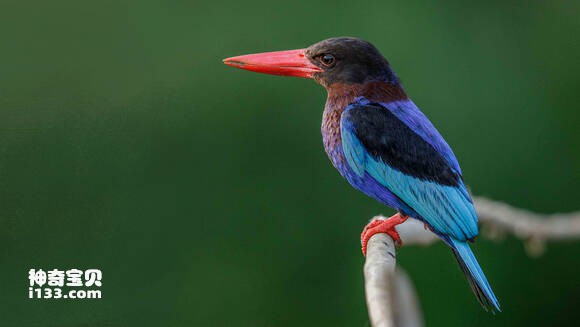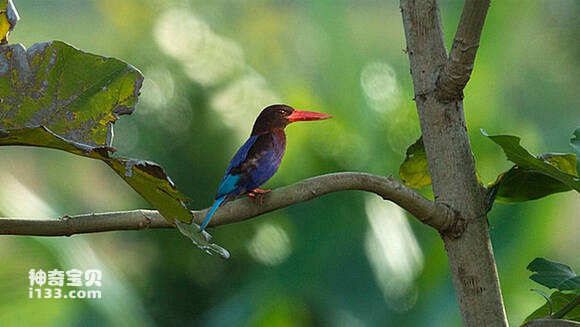Halcyon cyanoventris
IUCN
LCBasic Information
Scientific classification
- name:Halcyon cyanoventris
- Scientific Name:Halcyon cyanoventris,ava Kingfisher
- Outline:Climbing birds
- Family:
Vital signs
- length:About 27 cm
- Weight:Around 93g
- lifetime:No textual research information is available
Feature
Distribution and Habitat
Java Emerald is found in the Pacific islands (including Taiwan, Dongsha, Paracel, Zhongsha and Spratly Islands, as well as the Philippines, Brunei, Malaysia, Singapore, Indonesia's Sumatra, Java and Papua New Guinea)
The Javan emerald is frequently found in various woodlands and rural areas planted with grasslands, rice paddies, swamps, coastal shrubs, mangroves, fish ponds, forests, dense tropical rainforests, and occasionally in parks and urban gardens, but it is not a true urban bird. It is endemic to small islands such as Java and Bali, and is quite common in its range from sea level to 1500 m.
Appearance
The Javanese jade is 27 cm long and weighs 93 g. The adult bird has a brown-black head, with only a few neck feathers completed blue-violet. The chin, throat, collar and chest are brown, the chin is light brown, and there are several black stripes on the sides of the throat and neck. The back, shoulder blades, tail and wings show a bluish-purple tone. The main feathers, secondary feathers and wing corners can be seen in bright turquoise blue. There are white spots on the wings. The underside of the armpits and wings are black. Red mouth, dark brown irises, red eyes. The legs are dark red. Young birds have darker feathers than adults. Drab greens or purples replace turquoise blues. The throat is white or pale yellow, and the mouth is orange-brown.
The mouth is thick and long like a chisel, the base is wider, the mouth peak is straight, the peak ridge is round, there is no nasal groove on both sides; Wing circle, the first primary feather is equal or slightly shorter than the seventh
Details
Jadeite Halcyon cyanoventris, ava Kingfisher, no subspecies.

Javanese jade is not very social. They live alone or as a couple in a tree on the plain. It usually lives in dense forests and riverbanks near water, and usually hunts alone or in pairs. Like most forest kingfishers, they are completely carnivorous. Often searching for prey in leaves or dirt. The diet consists mainly of insects, such as crickets, spiders, scorpions, and snails. Also fish, freshwater crustaceans, larvae and frogs.

Jadeite nests on earth cliffs or river embankments, tunnelled caves dug with mouths for nests, 60 cm deep, 20 cm wide, 10 cm high, oval. These caves are generally bare of bedding. The eggs are laid directly on the nest ground. During the breeding season between February and September, the female lays three to five eggs in the nest, which are nearly round and bright white.
Listed on the International Union for Conservation of Nature (IUCN) Red List Protection Level: Not Threatened (LC).
Protect wild animals and eliminate wild meat.
Maintaining ecological balance is everyone's responsibility!








